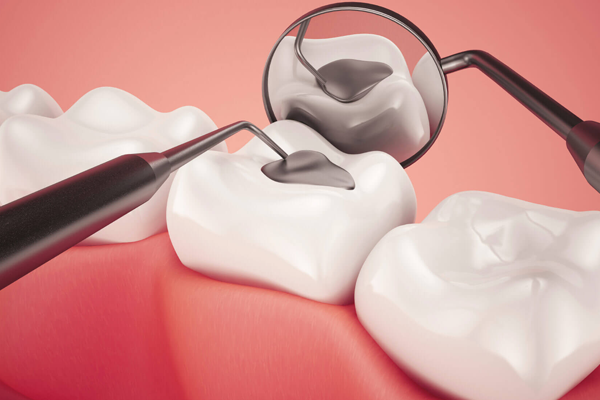Cavity Filling
A filling is a process to restore a damaged tooth to its normal function and shape. When a dentist gives you a filling, they remove the decayed tooth material, clean the affected areas and fill the cavity with a filling material. By closing spaces where bacteria can enter, a filling prevents further decay.
Materials that are used for fillings include gold, composite resin, porcelain and amalgam.
Which filling is best?
Depending on the extent of the repair and whether you have allergies to certain materials, the type of filling is preferred.
Gold fillings can be cemented in a place. Gold inlays are well tolerated by gum tissues and lasts over 20 years. Most authorities consider gold the best filling material. But, it is expensive choice and requires multiple visits.

Amalgam (silver) fillings are resistant to wear and are inexpensive. Due to their dark color, they are noticeable than porcelain or composite restorations and are not used in visible areas such as front teeth.
Composite (plastic) resins are matched to the same color as of your teeth and used as a natural appearance. The ingredients are mixed and placed into the cavity. Composites may not suit for large fillings as they may wear over time. They can also become stained from coffee/tea or tobacco and lasts as long as other types of fillings from three to 10 years.
Also known as inlays or onlays, Porcelain fillings are produced in a lab and then bonded to the tooth. They can be matched to the color of the tooth and resist staining. A porcelain restoration covers most of the tooth and their cost is similar to gold.
In case, the decay has affected a large portion of the tooth, a crown or cap is recommended. Decay that has reached the nerve can be treated through either root canal therapy or pulp capping.
